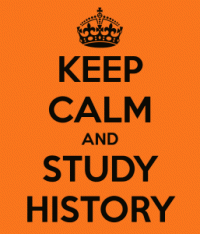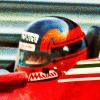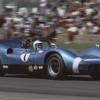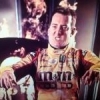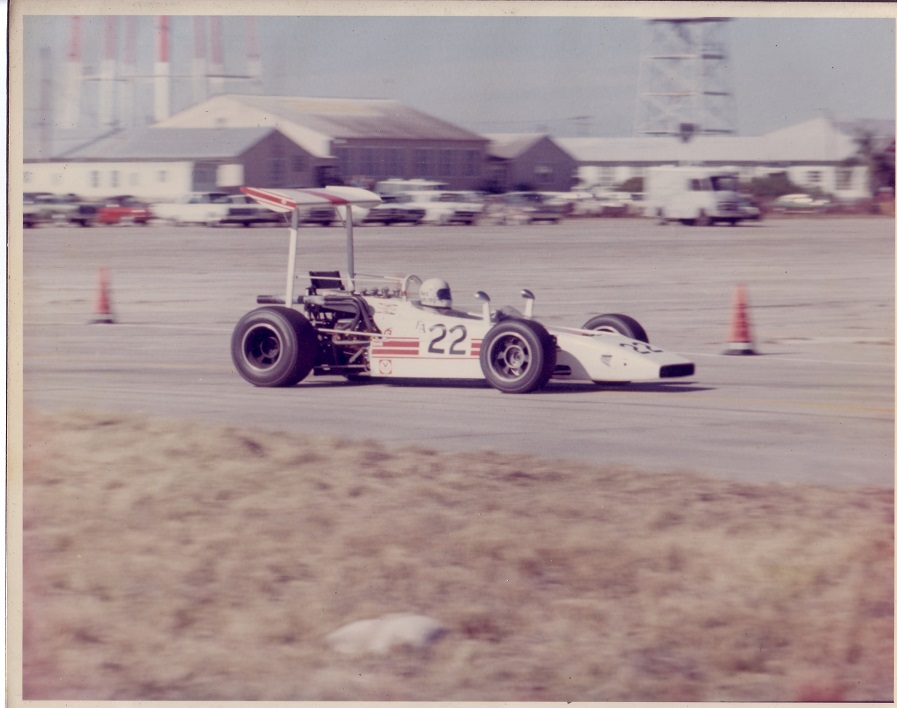I found this site which has a goodly amount of information on car usually ignored by those who are infatuated with the cars driven by the rich and famous.
http://sports.racer.net/index1.html
This bit from that site give little known info on the make of cars which was my first favorite open wheel car almost fifty years ago.
Even this site does not give LeGrand or Rex Ramsey the credit they should get for winning a round of the Canadian Formula A series in 1969, at Troix-Rivierers but it does tell of one major reason the last LeGrand had that hampered it.
I do remember reading, probably in AutoWeek and Comp. Press that they entered the race mostly as a way to break the car in.
Mk6 and Mk7 - Heavy Metal
While Bruce was in Europe, Red was putting together the latest model, the Mk6. Essentially a production version of the Mk5, the Mk6 was designed to replace the Mk3. The Mk6 was run in either FB or FC, depending on the engine that was installed. It was a bigger car than the Mk3 and now came stock with 7.5 x 13 in front and 9.75 x 13 rear wheels which soon grew to 11 x 13s by mid 1967. A number of these cars are thought to have been producedalthough, there is very little specific competition history. The 1.6 liter Lotus and Alfa twin cams engines were the powerplant of choice for FB.
In this era, the expanding wheel business became a major part of LeGrand racecars. It kept the doors open and allowed Red LeGrand the resources to follow his passion of building race cars with his name.
The Mk7 was designed to contest the SCCA 5 liter Formula A class. Previously, the FA class was a bit of a catch all, but starting in 1968, the class was strictly a class for 5 liter engines based on production V8 blocks. Red and Bruce decided to literally throw together a car from the parts bin. The Mk6 FB car was used as the starting point. The Chassis was widened, a large radiator was fit in the nose, the engine bay was beefed up a bit , and external side pod tanks were fitted. With many similarities to previous LeGrand Mk3-6, the Mk7 is a tube space frame chassis, with the stated benefit being that it is easier for the private entrant to repair than it would be to repair a monocoque construction chassis.. Brakes were 10.5 in diameter solid disks with Airheart single pot caliper. These were later swapped for double pot Airheart calipers on the Mk7A. The rear brakes used LeGrand's signature placement of the disk inboard of the upright to improve cooling. Wheels were 9.5 in wide by 13 in. diameter front, and 11 x 13 rear. 10 in and 14 in. x 15 in. diameter wheels were used on the Mk7A.
The Mk7 was designed to use either the Chevy 302 or Ford 302. The chassis design was different for the two engines. In prototype form (S/N 001), a stock Camero Z28 engine with wet sump was used with a McKay manifold and downdraft Webers. This engine produced 400-425 HP and the total engine cost was less than $1000. Customers were soon putting full race dry-sumped engines in the cars. Most customers chose the Chevy over the Ford block.
The S/N 001 car used a ZF gearbox. The Hewland LG500 was chosen for later cars because it was easier to work on and because it provided more flexibility in gear selection. Wheel base was 90 in., with front and rear track being 57 in. Two 15-gallon gas tanks (the SCCA maximum allowed) are placed longitudinally on each side of the driver. Dry weight was 1270 lb. (rule minimum was 1250 lb.). Proprietary LeGrand cast magnesium parts were used for the wheels, uprights and wheel hubs. Steering was via LeGrand rack and pinion. In 1968, the Mk7 sold complete, ready to race, with a 450 HP Bartz dry-sumped engine, for $13,372.
By Christmas, Red and Bruce had a car complete. Bruce recalls that despite the rush job, the car actually was very good, had reasonable balance; considering the relatively skinny treaded tires and no wings; and was so light that it was really fast. Bruce said that it was the first time he had driven a car with such power and torque, and it was awesome. Perhaps the weakest components were the brakes, but they did work.
On 25 February, 1968, the prototype car was entered in the Pacific Coast season opener at Las Vegas, with Bruce Eglinton driving. This was a national event, and Bruce scored a victory right out of the box. Bruce recalls that he actually did a "horizon job" on the field and won quite easily. Keep in mind that this was a new class, and the rest of the constructors had not yet gotten their cars sorted. The little LeGrand Race Car Company was able to pull something together quickly and outclass the field.
The Mk7 has the dubious distinction of seriously curtailing the blossoming career of Bruce. After the Las Vegas victory, the LeGrand factory was on a high. They took their trophy home and promptly built an identical second car (002). In June of 1968, the car was taken to Whitman stadium in Pacoma, Los Angeles to just check that there were no oil or water leaks, and then it was taken up to Willow Springs for chassis tuning prior to its first F5000 race. The rules required fuel cells, and Red ordered some, but they didn't fit in the tanks. No one thought much of this, because Bruce hadn't driven a car yet in his career with fuel cells. So, as always, gas was put straight in the aluminum side tanks. Nomex wasn't required until 1968, and Bruce didn't yet have a Nomex suit yet. So, he went out in shirtsleeves and helmet, but no gloves because "he was going to just warm it up". While exiting the pits in first gear, the throttle stuck. Bruce's first instinct was to jam on the brakes. In previous cars, this would overcome the engine while you found the kill switch. With 500 HP and gobs of torque, the little single pot Airheart brakes were no match for the car's power and just locked up the front wheels eliminating steering. Bruce fumbled for the kill switch, unwilling to push in the clutch, for fear of destroying the team's new engine. Things happen fast with 500 HP pushing you, and Bruce hit the wall, maybe at only 60 mph before finding the kill switch. The left front corner was torn off with an A-arm piercing the left fuel tank. The car burst into a ball of fire. The bodywork had been removed which was good and bad, since it allowed gas to spray all over Bruce, but did allow him to exit the car quickly. Bruce suffered 3rd degree burns over 30% of his body, was in the hospital for 18 months, and was very lucky to live.
This unfortunate incident was quite a blow to LeGrand. His star driver and chief engineer was out just when things were looking promising. Lew Sells won the Championship that year in an Eagle. LeGrand built six Mk7s in 1968; five used Chevy power, one Ford. Jim Paul came in to help Red with the engineering chores. S/N 002 was rebuilt, and Rex Ramsey was chosen as the factory driver. Rex did okay, but a LeGrand Mk7 never won another race at the National level, although they did win several regional events. Chuck Elliot raced S/N 002 in the first L&M Championship, and had a respectable result. The LeGrand team gained experience, learning that components that were strong and reliable with 170 horse power were no match for 500 HP.
Mk11 - Next Generation F5000
Bruce Eglington had started the design on the next formula 5000 car before his accident, the development from racing on the national level and the experience gained required an all new car. The Mk11 F5000 car was designed by Jim Paul with a clean sheet of paper and was built to contest the USAC series. It featured a beefed up chassis (still tube frame) and suspension components, wider wheels, and stronger uprights. Although Rex Ramsey raced it first, Jim continued to race the car in the Pro Series and made middle of the pack finishes. The car often broke components, even with the beefed up design. It is believed that only one Mk11 was built. By this time, all manner of wings had grown on race cars. It was tough to keep up with the development capabilities of the larger British companies.


